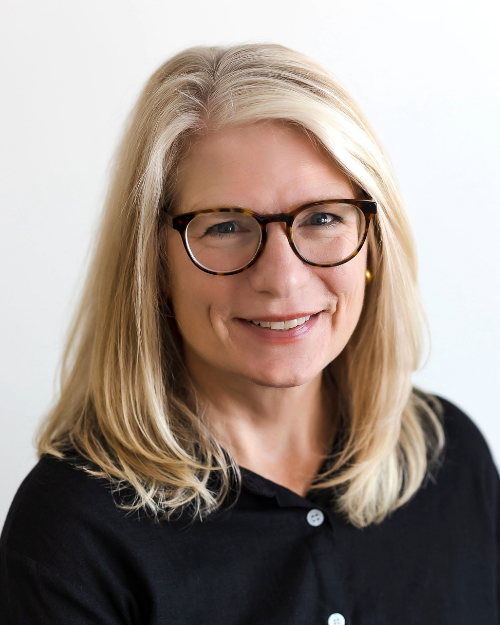A Culture of Philanthropy: One Executive Director’s Journey

Muriel* is the executive director of a nonprofit theater with an annual budget of $19 million. She recently got a message from Arthur, a board member, expressing disappointment: his daughter had been treated rudely at the box office when she asked to exchange her tickets for another date. Muriel responded the way most people would–she felt a little annoyed at first and wanted to have a word with the front-of-house manager about the employee involved. But, upon further reflection, she realized that she’d heard of two other minor mishaps with public-facing staff in the last three months. Muriel had to admit that Arthur’s note was not indicative of an isolated incident. She also realized that in the last few years, there had been no substantive training or even a discussion with her team about a culture of philanthropy. She knew she needed to get busy shifting the internal culture.
What is a “Culture of Philanthropy?”
The term “culture of philanthropy” is not well understood. To start with, the word “philanthropy,” meaning “love of humanity,” is something of a speed bump because most people associate it with well-known philanthropists or large foundations (think MacKenzie Scott or The Gates Foundation). You might wonder: “What does philanthropy have to do with customer service in a box office?” The connection lies in the word “culture.” Peter Drucker, who researched and wrote about organizational dynamics in the mid-20th century, famously said, “Culture eats strategy for breakfast.” This means that the culture of an organization supersedes other large determinants, including broad strategic initiatives and, to a certain extent, even leadership. Culture can persist long after strategies have been deployed and leaders have moved on.
Founder and CEO of Creative Fundraising Advisors, Paul Johnson, puts it succinctly: “When there is a culture of philanthropy in your organization, it is pervasive. Everyone knows they have a role to play in fundraising; from board to leaders to staff to volunteers, every person understands and embodies the mission, values, and goals of the enterprise.”
So what does a culture of philanthropy look like in action? Paul says that a culture of philanthropy is recognizable in a few ways:
- First, everyone shares responsibility for development.
- Second, fundraising is fully integrated with the mission.
- Third, the organization is committed to cultivating co-creative partnerships, in which donors are embraced as active stakeholders and empowered to share time, ideas, and expertise, as well as financial support.
Shared responsibility for development does not mean that everyone in the organization is soliciting donations; rather, everyone understands that the organization’s purpose is to carry out a mission that can only be supported through philanthropic means. In large or small nonprofits, everyone connected to the enterprise shows up ready to play their role in a way that carries out the mission and makes the organization worthy of the donations it receives.
For Muriel, this meant providing training for her front-of-house staff to remind them of their importance as one “face” of the organization. The employees in this public-facing department speak directly with audience members, ticket buyers, and subscription holders nearly every day. This is a tremendous responsibility. When any public-facing employee or volunteer treats visitors with kindness, respect, and goodwill, that employee is advancing the culture of philanthropy. An usher in an auditorium would not know if he is seating someone who purchased a discount ticket ten minutes ago or someone who will be the next President of the Board. Every visitor and every interaction matters; every employee on the team is an ambassador for the organization.
Fundraising is fully integrated with mission when development is not siloed or separate from the other departments. No nonprofit mission can be fully realized without fundraising, so it’s important for the development department to be conceptually linked to the mission and functionally connected to other departments in the organization. When development is thought of as separate from the mission, just a department tasked with asking for money, the work of fundraising becomes transactional. The fundraisers’ work turns into a money chase, a rush to get the dollars needed to pay the bills for a mission that is carried out elsewhere in the building. This dynamic is alienating for everyone. It disconnects the development team from the big picture mission and cuts off the opportunity for donor relationships to be nurtured and for constituents to contribute their ideas, expertise, or time.
To foster cooperation between fundraising and front-of-house, Muriel arranged for both teams to meet for a conversation. Each department explained their roles to one another and then brainstormed ways they could collaborate on the larger goal of advancing the mission. It was revelatory for the front-of-house staff to learn that they could make or break a gift based on how they interacted with audience members. They gained a whole new perspective on their power to influence the success of the organization as a whole.
When the organization is committed to cultivating co-creative partnerships, a whole new world of collaboration opens up. It is important to note that the shift from transactional giving to co-creative partnerships is a big part of donor-centric fundraising. Studies over the last decade indicate that this is what donors want from their interactions with nonprofit organizations. They are seeking relationships in which they can serve as engaged participants rather than sidelined benefactors. When organizations emphasize relationships over transactions, the conversation gets much richer. Co-creative partnerships are more sustainable. They lead to more than one gift and provide organizations with many other resources, such as volunteer hours, professional expertise in a wide variety of fields, and access to a broader network of people.
Leading by Example
To follow up, Muriel called Arthur’s daughter, Ann, and asked her to coffee. It turned out that Ann, a young attorney, had attended drama classes in the organization’s education department in her teen years and had later been in an improv group in college. Ann said she had some ideas for improvisation workshops and that she’d love to help pilot a program if Muriel thought teens would enroll in it. Muriel agreed it was worth exploring. She went back to the office and called the Director of Education to tell him about this new relationship and get him connected with Ann, so the two of them could discuss the details.
Paul brings up one last point for consideration in building a culture of philanthropy in your organization: “The responsibility for making it work rests squarely on the shoulders of leadership. Leaders must model it, teach it to their staff, reinforce it regularly, seek the opportunities, make the community connections, and tend to those relationships if they want them to last.”
Muriel’s culture-of-philanthropy journey unfolded in just this way. It was on her to initiate the changes, but the effort was decidedly worth it. She started with bad news from a board member and ended with her front-of-house staff energized by a new consciousness of their importance to the mission and two departments more closely connected by exploring ways to help each other. The start of a new relationship with Ann, the second generation of a family with close ties to the organization, was an unexpected bonus.
Partner With Us
Could the culture of philanthropy in your organization use a boost? CFA’s consulting team can help you understand how your unique internal culture is functioning and where there may be opportunities to strengthen the culture of philanthropy and optimize your fundraising success. Contact CFA today.
*Disclaimer: Client confidentiality is paramount in our work with each and every organization. The story in this article is fiction, an amalgamation of several situations drawn from CFA’s broad experience in serving nonprofit organizations.
Leslie Cronin, Senior Manager of Strategic Communications
Leslie Cronin comes to Creative Fundraising Advisors with broad experience in education and nonprofits. Early in her career, she taught English, composition, and creative writing at selective independent schools, colleges, and universities. In 2005, she became Senior Development Writer at the Museum of Fine Arts, Houston, overseeing all aspects of communication coming out of the museum’s development department including exhibition descriptions, grant applications, correspondence with major donors, acknowledgements, and event invitations.
Leslie later brought her experience in education and fundraising to a new role, serving first as board member and then vice president of the board of an independent school in Houston, Texas. During her tenure, she was instrumental in the formulation of the school’s 20-year plan, including its successful accreditation as an International Baccalaureate institution. She worked closely with a wide variety of consultants on urban planning, architecture, and a fundraising feasibility study. Her insight into the client experience helps her every day in her work for CFA.
As Senior Manager of Strategic Communications, Leslie helps CFA’s clients shape their campaigns for maximum impact and results by leading case development workshops, writing compelling case summaries, and crafting powerfully persuasive campaign collateral. Additionally, Leslie manages CFA’s brand voice by developing content for the firm’s resource library and overseeing the editorial calendar.
Leslie believes nonprofits have the power to change the world. In crafting cases for support, she writes as a committed advocate for each client and their goals. Leslie holds two Masters degrees, one an MFA from the Iowa Writers’ Workshop, the other an MA in English Literature from Temple University. She is mother to two grown children, a voracious reader, and an amateur equestrian. She lives on Cape Cod with her husband, author Justin Cronin, and their rescue dog, Lonesome Dove.

